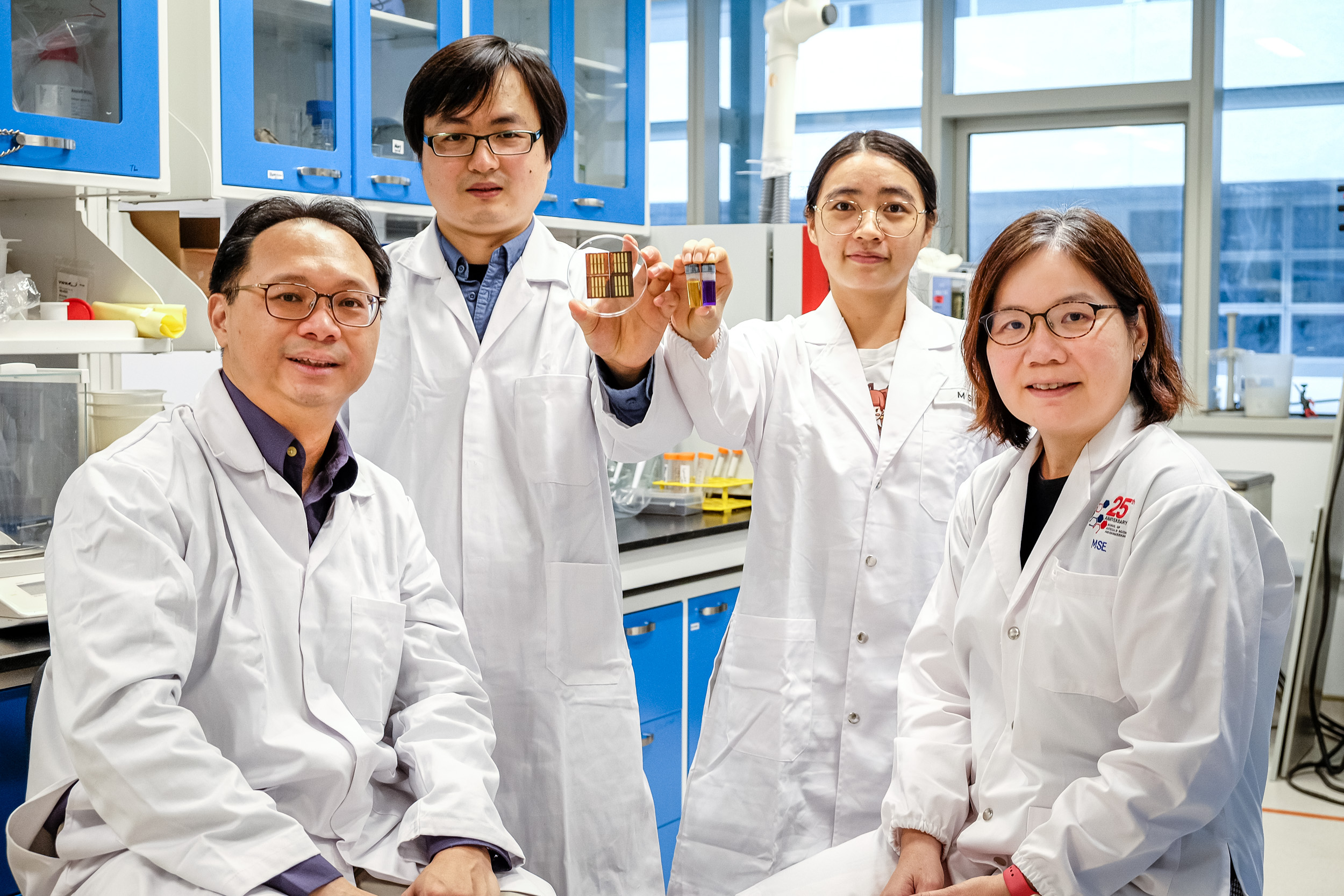Illuminating eco-friendly perovskite solar cells
NTU researchers develop a method to protect perovskite solar cells without using lead.

Although perovskite solar cells can potentially capture sunlight and convert it to electricity more efficiently than silicon-based solar cells, they release lead when damaged or discarded – a major obstacle hampering their widespread use.
To maximise the efficiency of solar power while minimising environmental damage, a team of NTU researchers devised a new approach that may facilitate the manufacturing of perovskite solar cells without lead – namely in the capping layer.
Using an approach called the full precursor method, the scientists coated perovskites with solutions containing metal halide salts (i.e. compounds made of chlorine, fluorine and iodine) and phenethylammonium iodide, a compound that is commonly applied to perovskites to improve their performance.
The researchers created a prototype miniature solar cell coated using the full precursor method. Tests revealed that the prototype performed as well as conventional perovskite and silicon-based solar cells.
“By expanding the library of materials that can be used for the capping layer, our findings unlock new opportunities for developing more efficient and stable perovskite solar cells,” says Prof Sum Tze Chien, Director of the Institute of Advanced Studies at NTU and Associate Dean (Research) of NTU’s College of Science, who led the study.
Prof Lam Yeng Ming, Chair of NTU’s School of Materials Science and Engineering, who co-led the study, adds: “As fossil fuels are depleting rapidly, our method is an important innovation that may propel a wider scale adoption of perovskite solar cells for solar energy harvesting.”
The scientists are working on scaling up the method to fabricate full-sized solar cells and are filing a patent with NTUitive, NTU’s innovation and enterprise company.
Read more about the breakthrough in “Expanding the low-dimensional interface engineering toolbox for efficient perovskite solar cells”, published in Nature Energy (2023), DOI: 10.1038/s41560-023-01204-z.
The article appeared first in NTU's research and innovation magazine Pushing Frontiers (issue #22, August 2023).





.tmb-listing.jpg?Culture=en&sfvrsn=9b7345be_1)
.tmb-listing.jpg?Culture=en&sfvrsn=57e7d9a3_1)
.tmb-listing.jpg?Culture=en&sfvrsn=462ec612_1)